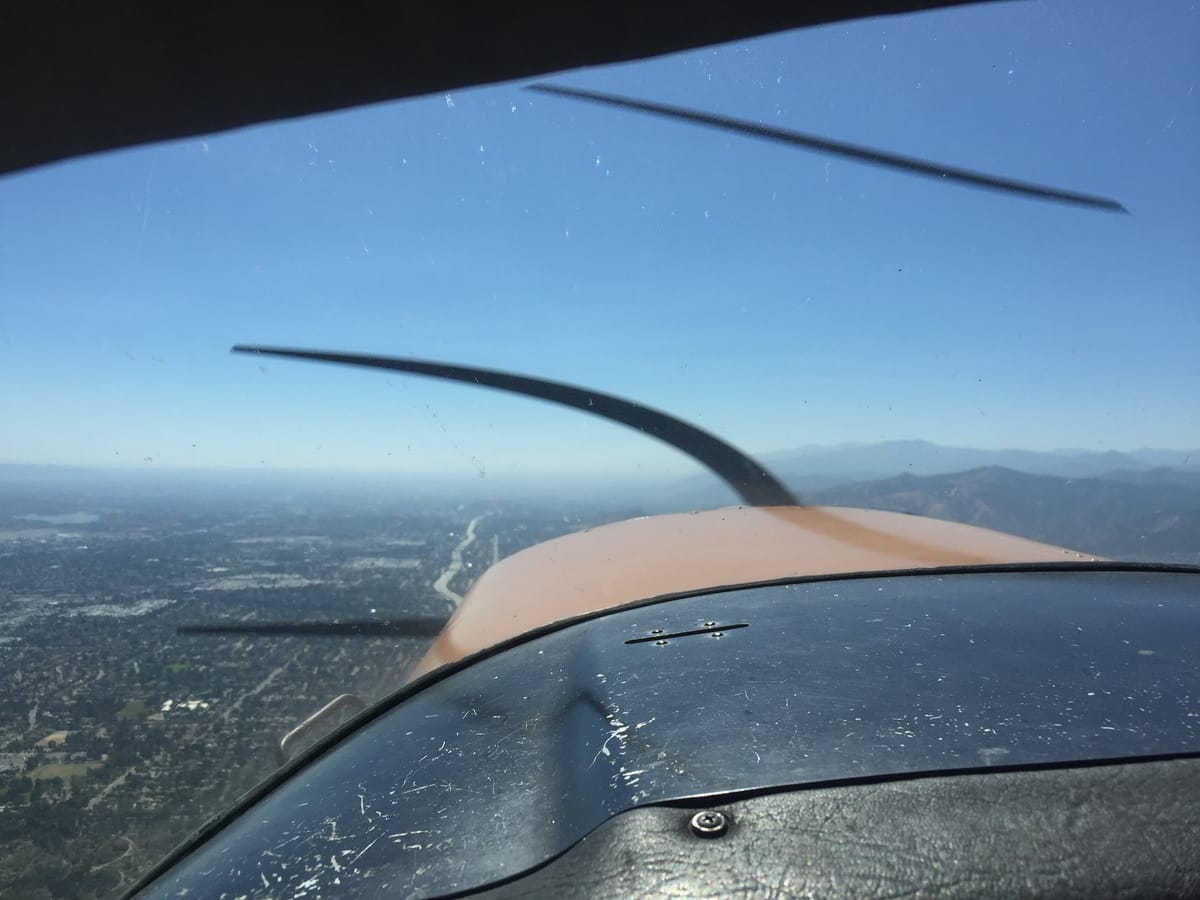Private Checkride Chronicles
Embarking on my private checkride journey with Tony Gatis at Cable Airport was an adventure. From navigating weather forecasts to mastering flight maneuvers, discover the highlights of my memorable experience.

One of the cool things I got to do when I was in the US was learning how to fly. Before I got my license I had to go through a flying exam, aka. a checkride. (The written exam too, but there's nothing special about that. And we typically got that taken care of a few weeks into the training)
My checkride was on June 28th with Tony Gatis at Cable Airport in N89084. I rescheduled twice. Initially, the checkride was set for June 21st. It was then moved to the afternoon of June 28th and subsequently changed to the morning. Despite the changes, Tony was very accommodating. I was relieved that we rescheduled to the 28th as the weather was much cooler than the original date, which was over 100°F.
A day before the checkride, Tony sent me a cross-country scenario: flying from Cable (KCCB) to Jean (0L7) with a stop at Apple Valley (KAPV) to drop him off (150 lbs) and pick up a 190-lb passenger with some baggage. We had to reach Jean by 4 pm. Tony later explained that the scenario could vary based on the written exam results. Since I missed a question on weight and balance, he had me plan a trip requiring recalculating W&B at KAPV.
On the exam day, I arrived at Cable around 9:45 am, 15 minutes before the scheduled time. Tony assisted with towing the plane to parking and then we completed the necessary paperwork. Tony is a friendly person, so don't be overly intimidated by the formality of the exam. Although I was initially nervous, our casual conversation helped me relax.
The oral exam focused mainly on the ACS. Interestingly, we began with the weather information for the cross-country rather than the usual currency and regulations. Tony emphasized this as it would typically be the first step in an actual flight. We reviewed the weather forecast I printed from 1800wxbrief.com, noting moderate turbulence en route and a TFR for firefighter operations near San Bernardino. Tony then reviewed weather charts on DUATS.
We discussed private pilot qualifications, limitations, and personal minimums for crosswind, visibility, and ceiling. Tony also questioned me about the maximum demonstrated crosswind for the C152, which I couldn't recall initially but found in the POH. Topics also included regulations, incidents vs. accidents, and right-of-way rules.
The regulatory segment concluded with airworthiness, where Tony had me review the maintenance logbook. Ensure you bring all required documents to the exam room as Tony will need copies.
We then covered engines, pitot-static, and vacuum systems, addressing potential issues and solutions. The human factors section touched on carbon monoxide poisoning, hyperventilation, and the five hazardous attitudes.
The majority of the oral portion focused on cross-country navigation and charts. We reviewed checkpoints, pilotage, chart symbols, emergency scenarios, communications, and airspaces in detail.
After a 15-minute break, we proceeded to the flight portion.
During preflight, Tony checked the engine, counterweights on the control surfaces, fuel, brakes, hydraulic system, and flaps.
We executed a soft-field takeoff followed by a short-approach emergency landing. Tony initiated a go-around once he observed a stabilized approach. The second landing was a soft-field landing, followed by short-field takeoffs and landings.
Following the flight plan, we reached checkpoints within close proximity to the planned times. We performed steep turns, stalls, slow-flight maneuvers, and a simulated instrument flight scenario involving unusual attitudes and an engine failure.
Upon returning to Cable, we executed a no-brake landing aiming for the first taxiway. Tony demonstrated a technique to increase drag by pulling the engine to idle. After discussing landing techniques, Tony informed me that I had passed.
We returned to the office for paperwork and a brief lesson on energy management. Tony shared an example of a skilled pilot landing precisely on a designated spot without using engine or flaps.
Overall, I had a positive experience with Tony and highly recommend him for a private checkride.
![It Takes Two [Thai Scholars] to Think](/content/images/size/w600/2024/10/1728229400772.jpeg)

